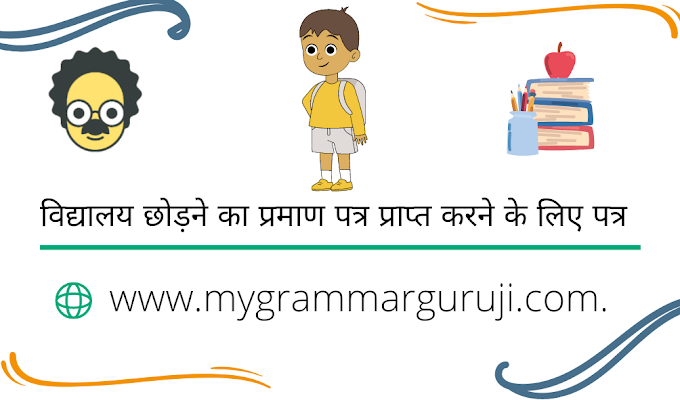Solving jumble sentences in a CBSE exam or any other exam that assesses your language skills requires a good understanding of grammar, syntax, and logical coherence. Here's a step-by-step guide along with examples to help you tackle jumble sentence questions effectively:
Step 1: Read the Instructions Carefully
Start by reading the instructions provided with the jumble sentence questions. This can help you understand if there are any specific rules or clues given.
अव्यवस्थित वाक्य वाले प्रश्नों के साथ दिए गए निर्देशों को पढ़कर शुरुआत करें। इससे आपको यह समझने में मदद मिल सकती है कि क्या कोई विशिष्ट नियम या संकेत दिए गए हैं।
Step 2: Identify the Topic Sentence
Look for a sentence that could potentially be the topic sentence. The topic sentence typically introduces the main idea or theme of the passage.
ऐसे वाक्य की तलाश करें जो संभावित रूप से विषय वाक्य हो सकता है। विषय वाक्य आम तौर पर अनुच्छेद के मुख्य विचार या विषय का परिचय देता है।
Example:
A. The weather was beautiful that day.
B. People were enjoying the sunshine.
C. Suddenly, dark clouds covered the sky.
D. Everyone rushed indoors.
In this case, sentence A seems like the most likely topic sentence as it introduces the setting and the main idea.
इस मामले में, वाक्य A सबसे संभावित विषय वाक्य जैसा लगता है क्योंकि यह सेटिंग और मुख्य विचार का परिचय देता है।
Step 3: Identify Logical Connections
Try to identify logical connections between sentences. Look for words or phrases that indicate relationships like cause and effect, time sequence, contrast, etc.
वाक्यों के बीच तार्किक संबंध पहचानने का प्रयास करें। ऐसे शब्दों या वाक्यांशों की तलाश करें जो कारण और प्रभाव, समय अनुक्रम, कंट्रास्ट आदि जैसे संबंधों को दर्शाते हैं।
Example:
A. The concert was sold out.
B. The band played their greatest hits.
C. Despite the rain, the fans stayed until the end.
D. Fans cheered loudly.
In this example, you can see that sentence B logically follows sentence A as it talks about what happened at the concert. Sentence C then explains the challenging situation at the concert, followed by sentence D describing the audience's reaction.
इस उदाहरण में, आप देख सकते हैं कि वाक्य B तार्किक रूप से वाक्य A का अनुसरण करता है क्योंकि यह संगीत कार्यक्रम में क्या हुआ, इसके बारे में बात करता है। इसके बाद वाक्य C कॉन्सर्ट में चुनौतीपूर्ण स्थिति की व्याख्या करता है, इसके बाद वाक्य D दर्शकों की प्रतिक्रिया का वर्णन करता है।
Step 4: Look for Pronoun References
Pay attention to pronouns (he, she, it, they, etc.) and their antecedents (the noun they refer to). This can help you determine the correct order.
सर्वनामों (वह, वह, यह, वे, आदि) और उनके पूर्ववृत्त (जिस संज्ञा का वे उल्लेख करते हैं) पर ध्यान दें। इससे आपको सही क्रम निर्धारित करने में मदद मिल सकती है.
Example:
A. John went to the store.
B. He bought some groceries.
C. They were out of milk.
Here, sentence B follows sentence A because "he" in sentence B refers to John in sentence A. Sentence C comes after B because "they" refers to the store or the people working there.
यहां, वाक्य B वाक्य A का अनुसरण करता है क्योंकि वाक्य B में "वह" वाक्य A में जॉन को संदर्भित करता है। वाक्य C, B के बाद आता है क्योंकि "वे" स्टोर या वहां काम करने वाले लोगों को संदर्भित करता है।
Step 5: Check for Continuity
Ensure that the sentences flow logically and that there are no abrupt shifts in the narrative. Sentences should connect smoothly.
सुनिश्चित करें कि वाक्य तार्किक रूप से प्रवाहित हों और कथा में कोई अचानक बदलाव न हो। वाक्य सुचारु रूप से जुड़ने चाहिए।
Example:
A. The cat sat on the windowsill.
B. It looked outside.
C. The rain started pouring.
In this case, sentence B follows sentence A because "it" refers to the cat. Sentence C follows B because it continues the story of what the cat observed.
इस मामले में, वाक्य बी वाक्य A का अनुसरण करता है क्योंकि "यह" बिल्ली को संदर्भित करता है। वाक्य C, B के बाद आता है क्योंकि यह बिल्ली ने जो देखा उसकी कहानी को जारी रखता है।
Step 6: Re-read and Revise
After arranging the sentences, re-read the entire passage to ensure that it makes sense and flows logically. Make any necessary revisions if you find any mistakes.
वाक्यों को व्यवस्थित करने के बाद, यह सुनिश्चित करने के लिए पूरे अनुच्छेद को दोबारा पढ़ें कि इसका अर्थ समझ में आता है और यह तार्किक रूप से प्रवाहित होता है। यदि आपको कोई गलती मिले तो आवश्यक संशोधन करें।
Example:
A. The car was parked on the street.
B. The driver forgot to lock it.
C. In the morning, it was gone.
D. The police were called.
After arranging the sentences, you should have A, B, C, D in that order.
Remember; Practice is key to improving your skills in solving jumble sentence questions. Try solving various jumble sentence exercises and practice papers to hone your skills before the CBSE exam.
Solving jumbled words to form a sentence is a common exercise in language exams like CBSE (Central Board of Secondary Education) in India. Here's a step-by-step guide along with examples:
Step 1: Identify the Parts of Speech
Before you begin rearranging the jumbled words, try to identify the parts of speech (nouns, verbs, adjectives, adverbs, etc.) in the sentence. This will help you get a sense of the sentence's structure.
Step 2: Look for Clues
Read the words carefully and look for clues like subject-verb agreement, tense, and logical connectors (such as conjunctions like 'and,' 'but,' 'because'). These clues can help you determine the correct order of the words.
Step 3: Start with the Main Subject and Verb
Begin with the main subject and verb of the sentence. Usually, these words are the backbone of the sentence. For example:
- Jumbled: Dog quickly brown the ran.
- Correct: The brown dog ran quickly.
Step 4: Build Around the Subject and Verb
Once you have the subject and verb in place, build the sentence around them by adding modifiers, objects, and other elements. For example:
- Jumbled: Brown the quickly dog ran.
- Correct: The brown dog ran quickly.
Step 5: Pay Attention to Word Order Rules
In English, word order is crucial for sentence formation. Make sure to follow the standard word order rules. For example, adjectives typically come before nouns, and adverbs often come after verbs.
- Jumbled: The danced gracefully she.
- Correct: She danced gracefully.
Step 6: Ensure Coherent Meaning
The final sentence should make sense and convey a coherent message. Check if the sentence you've formed is logical and meaningful.
EXERCISE
1. Jumbled: Playing happily the children park in the.
Correct : The children are playing happily in the park.
2. Jumbled: She morning goes to every walk for a.
Correct : She goes for a walk every morning.
3. Jumbled: Homework completed the quickly student his.
Correct : The student completed his homework quickly.
4. Jumbled: Yesterday watched they movie a interesting.
Correct : They watched an interesting movie yesterday.
5. Jumbled: Delicious the cake ate children the happily.
Correct : The children happily ate the delicious cake.
Certainly! Here are some more jumbled sentences for practice, along with their correct answers: 👇
1. Jumbled Sentence:
- The park / in the / children / playing / are / happily.
- Answer: Children are happily playing in the park.
2. Jumbled Sentence:
- I / my / in / morning / like / coffee / black.
- Answer: I like my coffee black in the morning.
3. Jumbled Sentence:
- She / to / the / concert / excitedly / went / last night.
- Answer: She went to the concert excitedly last night.
4. Jumbled Sentence:
- The / the / over / city / beautiful / sunset / watched.
- Answer: They watched the beautiful sunset over the city.
5. Jumbled Sentence:
- The / the / before / early / always / bird / catches / worm / proverb.
- Answer: The early bird always catches the worm, proverb.
6. Jumbled Sentence:
- He / for / has / years / been / studying / three / computer science.
- Answer: He has been studying computer science for three years.
7. Jumbled Sentence:
- Mountains / snow / covered / the / with / are / in / winter.
- Answer: The mountains are covered with snow in winter.
8. Jumbled Sentence:
- Her / the / across / bridge / the / dog / happily / ran.
- Answer: Her dog ran happily across the bridge.
9. Jumbled Sentence:
- They / for / their / trip / packing / are / eagerly / upcoming.
- Answer: They are eagerly packing for their upcoming trip.
10. Jumbled Sentence:
- The / on / chef / carefully / the / ingredients / table / placed.
- Answer: The chef carefully placed the ingredients on the table.
Feel free to use these as practice or create your own jumbled sentences to solve. It's a fun way to improve your sentence construction skills!







No comments:
Post a Comment
Thank you! Your comment will prove very useful for us because we shall get to know what you have learned and what you want to learn?